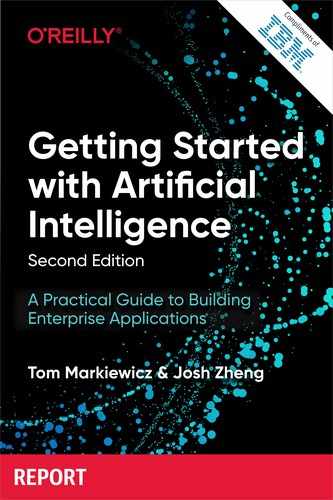Book Description
Getting started in enterprise AI can be daunting. Is your data pipeline robust enough? Do you want to mine unstructured data in emails, blog posts, and other documents? Build a chatbot? Use computer vision to classify images? Where do you start? And how do you make sure your first attempts succeed?
This book is the ideal starting point for your journey into enterprise AI. Through case studies, implementation examples, and a survey of the landscape, developers will learn technologies for automating and detecting patterns that can augment human expertise and empower employees and applications to make rich, data-driven decisions.
In the second edition, authors Tom Markiewicz and Josh Zheng--developer advocates for IBM--examine common use cases for AI in the enterprise, including natural language processing (NLP) and computer vision. You'll also explore a new chapter on hybrid and private clouds.
- Get a complete introduction to artificial intelligence and survey the growing AI market
- Explore a high-level guide to data pipelines and hybrid clouds--the backbone of your AI applications
- Learn why NLP is the key to mining unstructured data in emails, articles, blog posts, customer support discussions, and other documents
- Examine capabilities that computer vision brings to your applications, including image classification and tagging
AI integration is fast becoming a fundamental component of business growth across a wide range of industries. With this book, your company will learn how to take advantage of this unique technology.
Table of Contents
- 1. Introduction to Artificial Intelligence
- 2. Natural Language Processing
- 3. Chatbots
- 4. Computer Vision
- 5. AI Data Pipeline
- 6. Hybrid Clouds
- 7. Looking Forward
